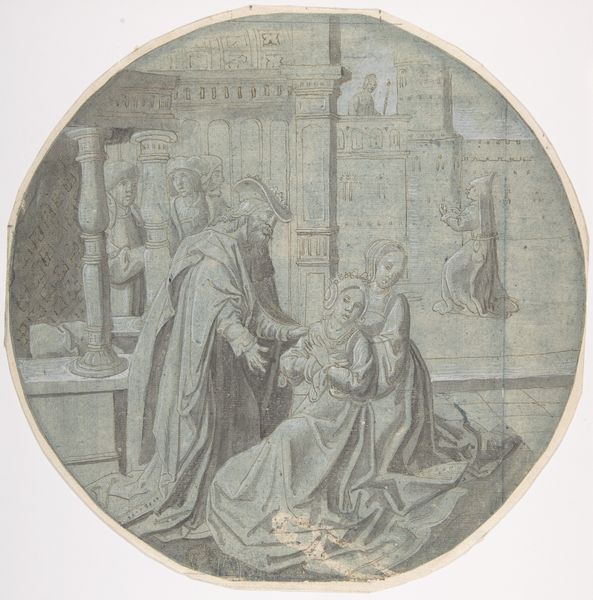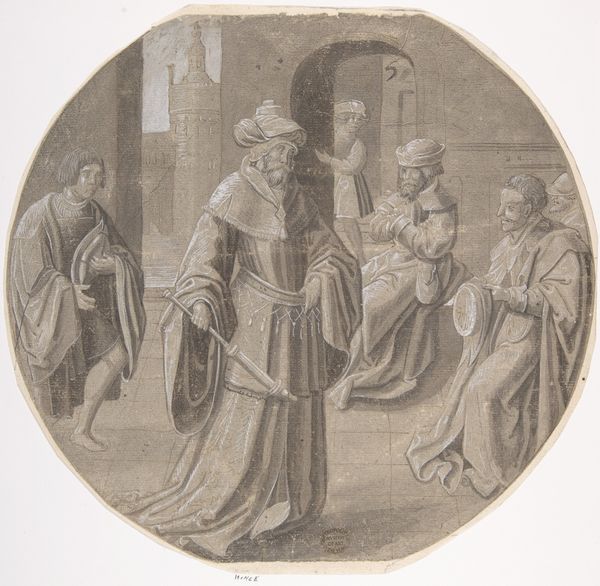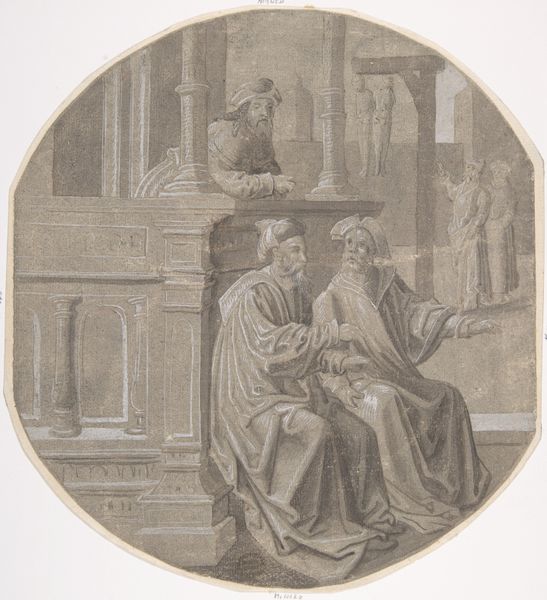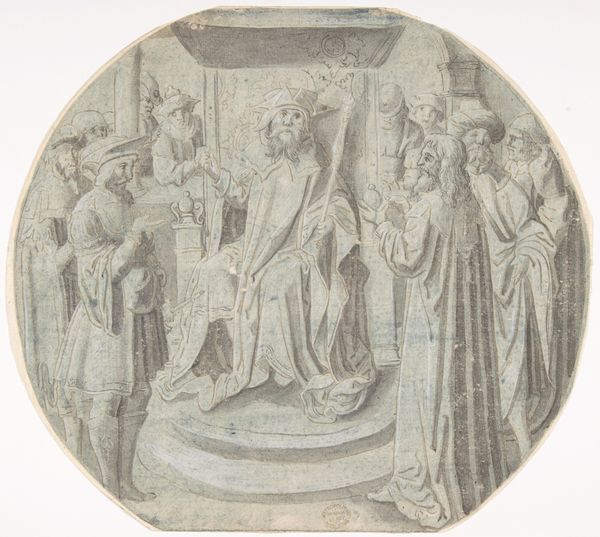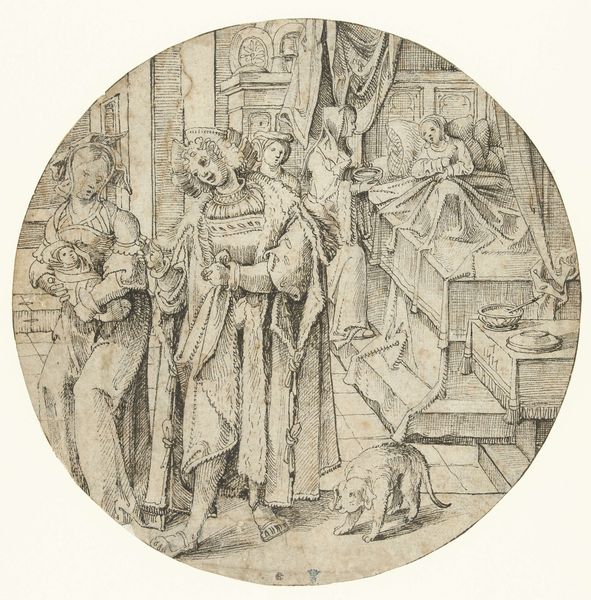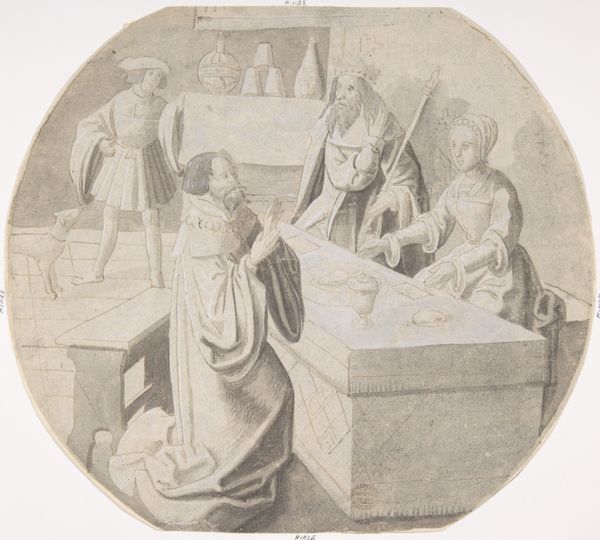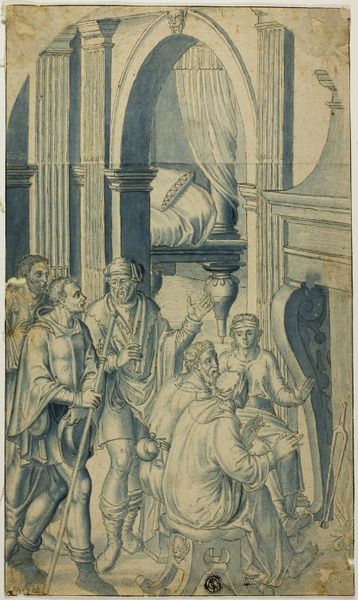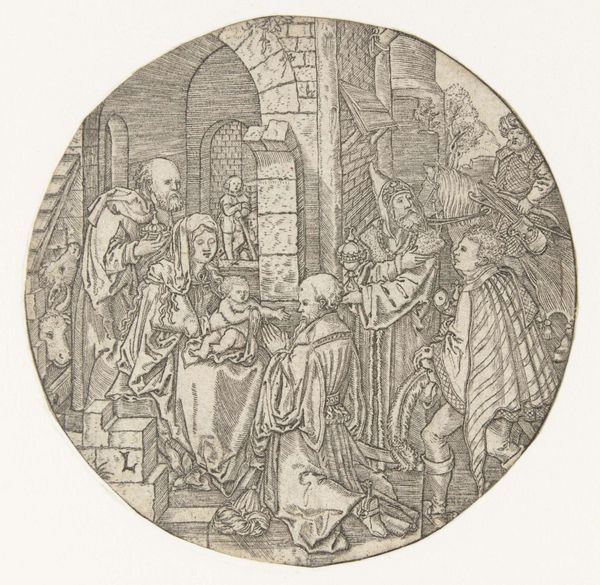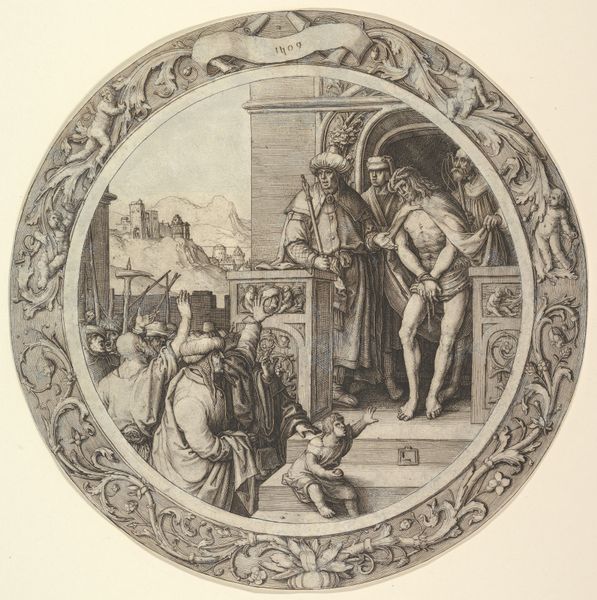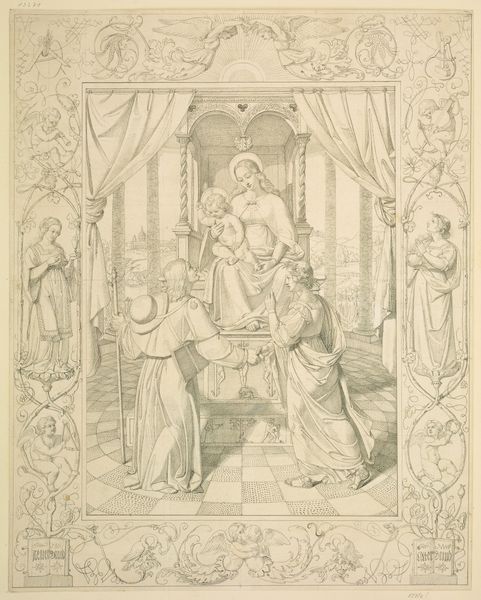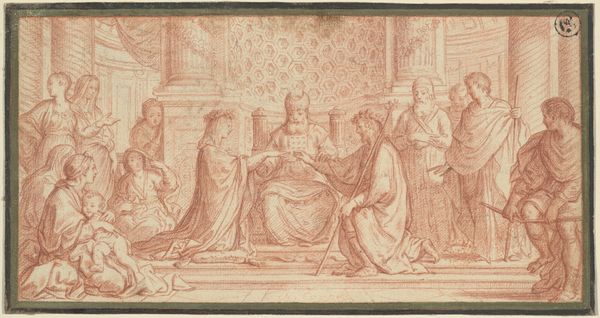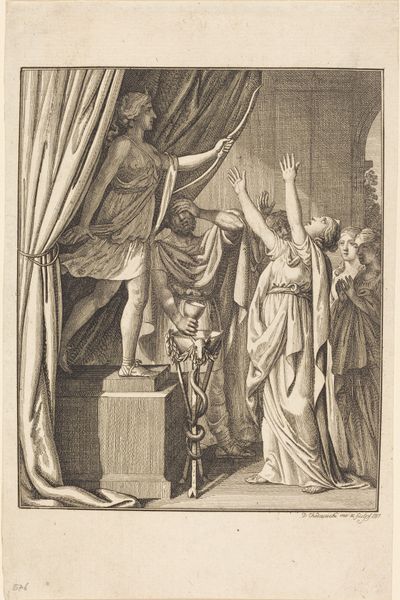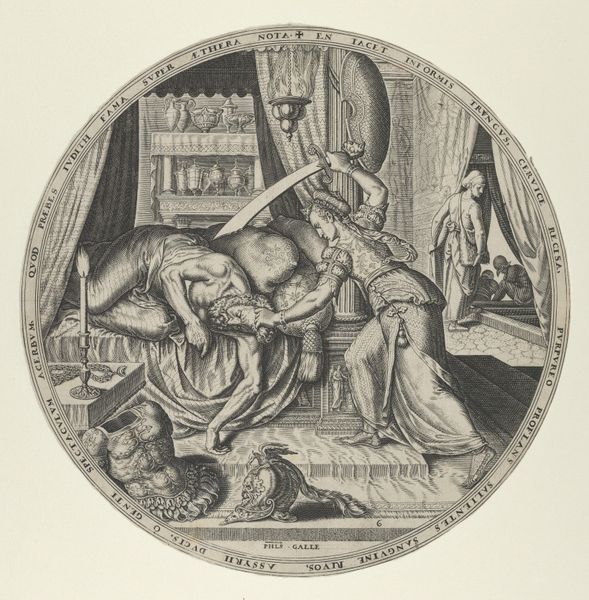
drawing, print, charcoal
#
drawing
#
toned paper
#
narrative-art
# print
#
charcoal drawing
#
figuration
#
11_renaissance
#
charcoal art
#
men
#
charcoal
#
history-painting
#
northern-renaissance
Dimensions: diameter: 9 1/4 in. (circular)
Copyright: Public Domain
Editor: Here we have Pseudo-Aert Ortkens's "Haman begs Esther for his Life," a charcoal drawing from sometime between 1500 and 1540. I find it striking how vulnerable Haman appears, kneeling before Esther. What’s your interpretation of this depiction, particularly in the context of its time? Curator: This piece offers a compelling lens through which to examine power dynamics, especially considering the era it was created in. Look at the clear hierarchy displayed; it is not just a visual choice but a reflection of a deeply structured social order. Think about how the story of Esther, a Jewish woman who rises to power in a Persian court, challenges and subverts conventional narratives of the time. Editor: That's interesting! It portrays Esther as powerful, despite her apparent submissive attitude near the deathbed. How does her religious identity factor into this narrative of power? Curator: Precisely! The artist presents Esther within a visual framework that highlights both her vulnerability as a woman in a patriarchal society and her strength in leveraging her position to protect her people. Considering the historical persecution of Jewish communities, Esther's triumph over Haman resonates powerfully. This work becomes more than a biblical scene, doesn’t it? Editor: It does. The figures surrounding them are so stiff and severe, they don't seem to be actively participating. Is there significance to their static poses? Curator: Absolutely. The stillness can be seen as emblematic of the rigid social constraints and expectations that framed the lives of individuals at that time. But think, too, about what it could mean for them to *not* intervene. What is their role in enabling and sustaining structures of inequality? Editor: That adds so many layers. I had initially perceived it as a straightforward scene of supplication, but understanding the socio-political undercurrents reframes it entirely. Curator: Exactly. This work invites us to think critically about power, identity, and the potential for subversion within seemingly immutable structures. Looking closely allows us to unravel historical and social narratives that speak directly to issues that still resonate today.
Comments
No comments
Be the first to comment and join the conversation on the ultimate creative platform.
